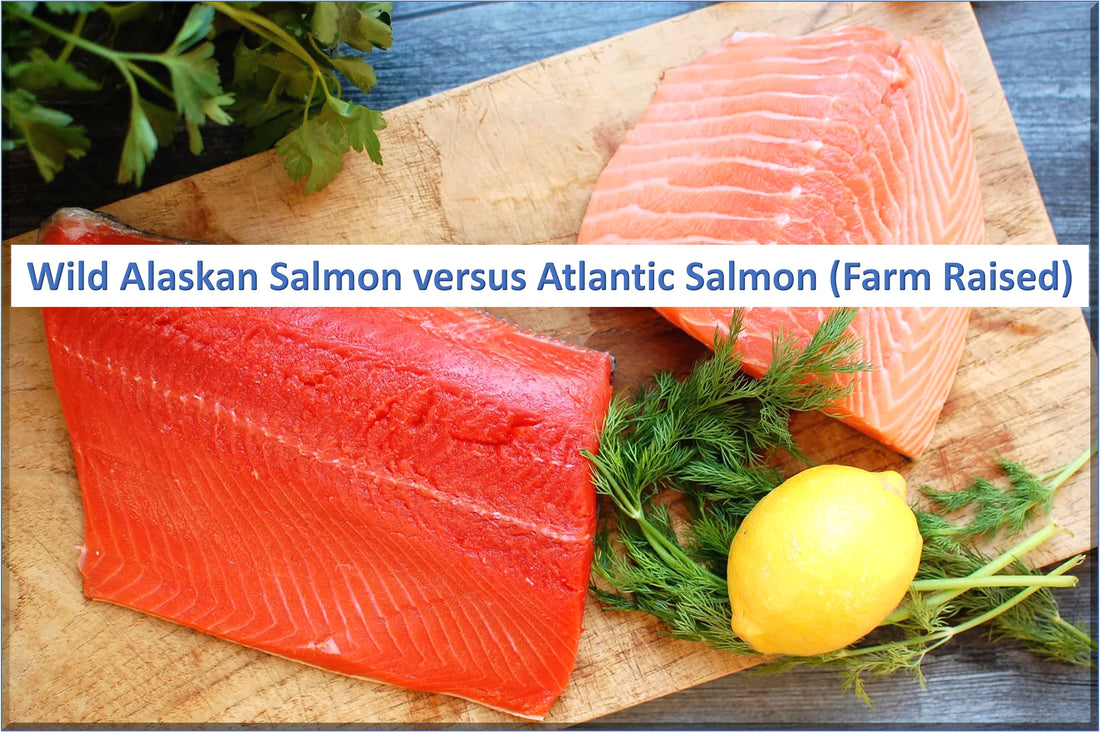In recent years, the popularity of North American Atlantic Salmon has soared, becoming a staple in many households. However, what consumers might not be aware of is the significant difference between farm-raised North American Atlantic Salmon and its Wild Alaskan counterpart.
Here are the Top 5 Reasons to buy Wild Alaskan Salmon versus Atlantic Salmon, a marketing term for farm raised foreign salmon:
1. The Farming Process
Unlike the free-roaming life of wild Alaskan Salmon, a substantial portion of North American Atlantic Salmon comes from farm-raised sources. These fish are often bred in pens located in various countries, with foreign suppliers playing a major role in meeting the high demand.
2. Artificial Enhancements
One alarming aspect of farm-raised North American Atlantic Salmon is the use of artificial additives. To enhance the fish's appearance, some farms resort to adding coloring agents, giving the salmon a vibrant pink hue reminiscent of its wild counterpart. Additionally, hormones may be introduced to accelerate growth, raising concerns about the impact on both the fish and those who consume it.
3. Lack of Nutritional Benefits
While wild Alaskan Salmon is celebrated for its rich omega-3 fatty acids and other essential nutrients, the farm-raised North American Atlantic Salmon might fall short in delivering these health benefits. The artificial environment, diet, and additives can compromise the nutritional value of the fish, leaving consumers with a product that lacks the natural goodness associated with wild-caught salmon.
4. Environmental Concerns
The farming practices of North American Atlantic Salmon also raise environmental issues. Overcrowded pens, waste management problems, and the potential for escaped farmed salmon impacting wild populations are among the ecological challenges associated with salmon farming.
5. Making Informed Choices
As consumers, it's crucial to be aware of the origins of the salmon we consume and the practices involved in its production. Opting for wild Alaskan Salmon ensures a more natural, nutrient-rich product without the concerns associated with farm-raised alternatives.
In conclusion:
Atlantic Salmon IS farm raised salmon from foreign countries.
Total U.S. Atlantic Salmon Imports in 2014 by country, according to the USDA:
Chile 279,004,000 lbs.
Canada 104,399,000 lbs.
Norway 57,657,000 lbs.
United Kingdom 34,060,000 lbs.
The story behind Atlantic Salmon reveals a complex web of farming practices that can compromise both the quality of the fish and the health of our environment. Making informed choices about the salmon we buy allows us to support sustainable practices and enjoy the true benefits of this prized seafood.

